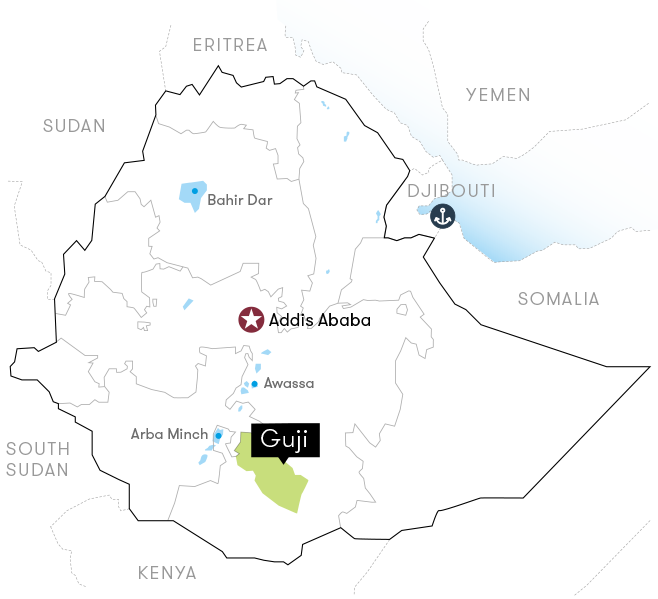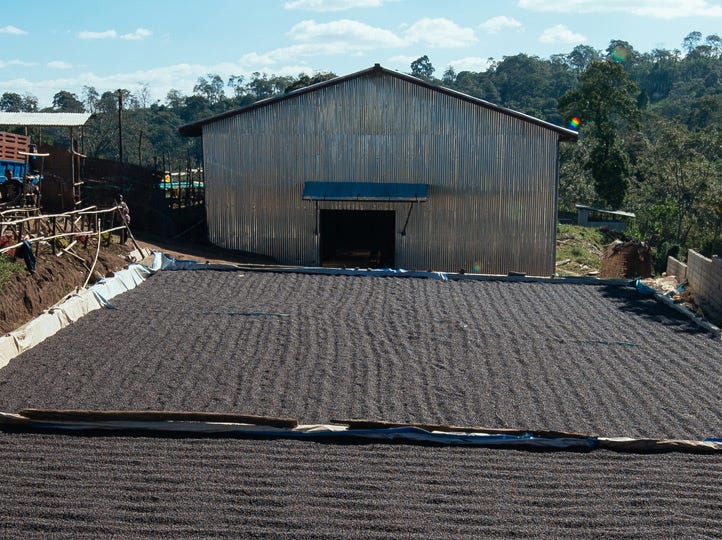
Awash River is a curated coffee sourced from smallholder farmers in the Guji and Sidamo regions of southern Ethiopia.
The River Awash carves through almost 750 miles of Ethiopia’s great rift valley, providing a vital water source for millions. Archaeologists believe humans have lived along the river since the dawn of man. Known as “the cradle of humankind”, the middle Awash is home to some of the most important archaeological discoveries in history, including perhaps the most famous hominid fossil ever found: “Lucy”.
In a poetic twist, Ethiopia is also the birthplace of the arabica coffee tree. As farmers started to harvest the wild forest coffee of Southern Ethiopia they in turn began to cultivate them on their own land. Nevertheless, wild coffee can still be found throughout Ethiopia and is represented by thousands of distinct varieties, many of which are still cultivated by farmers in Sidamo to this day.

The Region
Guji zone borders Sidama and Gedeo zones to the north. Together, this region represents the traditional heartland of speciality coffee in Ethiopia, with the region having developed a reputation for some of the most sought-after coffees in the world. The combination of high altitude, fertile soils and abundant sunshine provides ideal conditions for arabica coffee cultivation. Heirloom arabica varietals, which still grow wild in Ethiopia, contribute to a beautifully unique cup profile typified by notes of tropical and stone fruit and light florals.

The Process
This coffee is naturally processed, whereby ripe coffee cherries are dried in the sun on patios and raised African beds for around 12-15 days, according to the ambient conditions. This sun-drying process allows for many of the sugars in the cherry pulp to transfer into the bean, presenting in the cup as complex tropical fruit flavours. The raised beds provide airflow to facilitate a consistent drying process, though the cherries are also turned periodically to prevent mould and covered at night to protect from rain and moisture. Once the ideal moisture content is reached the dried cherries are rested in a cool environment before being hulled, graded and handpicked prior to export.




